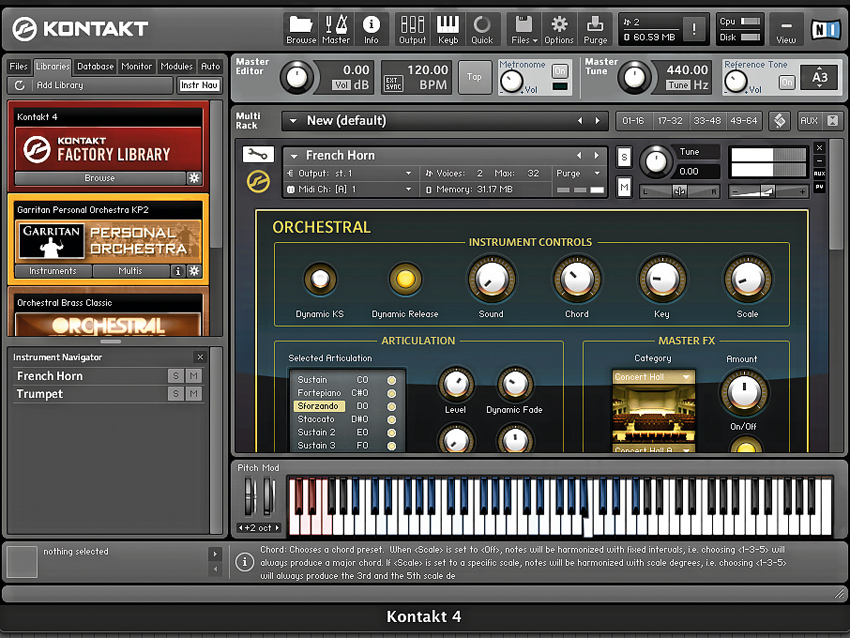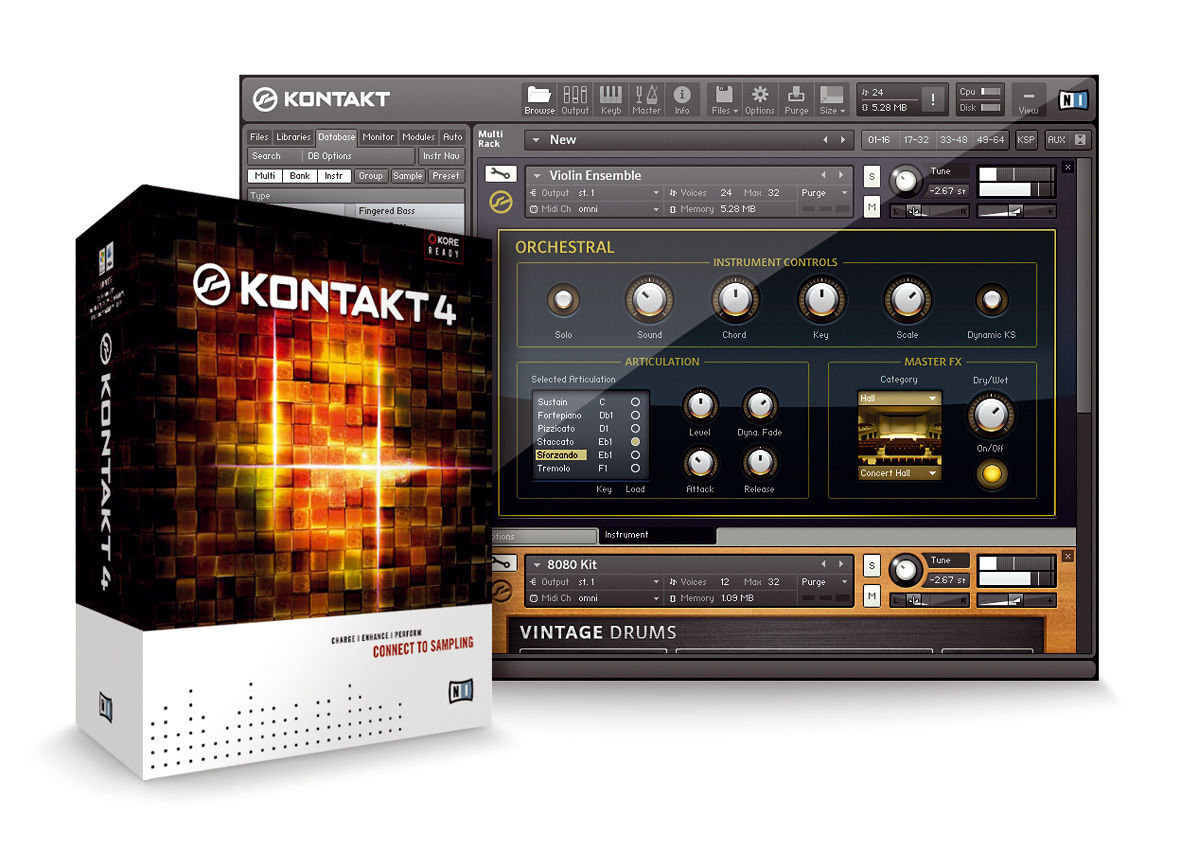
This is because AET (which is inserted as an effect at the sampler's Group level) is actually a sophisticated Fast Fourier Transform (FFT) filter which acts upon groups of samples. This concept might initially be open to misinterpretation: one sample doesn't literally morph to become another. AET works by introducing gradual timbral transitions between one set of samples and another, allowing you to 'morph' smoothly between them in real time. Kontakt 4's big new feature is designed to aid the authentic reproduction of acoustic instruments. This one is an Articulation Morph from the Choir collection. This is how the AET filter displays its morphing layouts.

Nevertheless, the graphics and text in the new colour scheme are all very clear and legible. I preferred the brighter look of Kontakt 3 personally, but that's just a subjective opinion. A quick run-down of the changes implemented in version 3.5 can be found in the 'Kontakt 3.5 Updates In Brief' box overleaf.Ĭosmetically, Kontakt 4 sees a return to the slightly more dour, monochromatic style of version 2. Version 4 also benefits from a number of other under‑the-bonnet improvements which were pre-empted in the version 3.5 update, released just prior to version 4. Nevertheless, version 4 does include a major new feature called Authentic Expression Technology (AET), plus a reworked Database with attribute-based browsing, an updated version of the library which adds 10GB of new sample data to the collection, as well as many new Presets and all-new Performance Views for every instrument in the library. Version 4 sees little change to the software's core functionality compared to, say, the differences between versions 2 and 3. Kontakt's impressive sample library has also matured in presentation and grown in size with each version, and this library, for many, must be amongst Kontakt's major selling points.
Sample kontakt 4 update#
Each major Kontakt update so far has brought significant usability enhancements, improved stability and reliability, and new tools with which to manipulate and process samples.
Sample kontakt 4 software#
Kontakt, as I'm sure you all know by now, is Native Instruments' flagship software sampler, and, as the large number four above suggests, it has now reached its fourth version. Note the Dynamic keyswitches (blue) and the Standard keyswitches (pink) on the keyboard. Kontakt's rack view, showing the library browser (left) and an Orchestral instrument loaded. Must have instruments to take your production to the next level, for free.It's got a bigger sample library and some whizzy new features, but what Kontakt 4 really wants to do is make your life easier. These are definitely some of our two favorite free Kontakt libraries out there.

The interface is beautifully simple and straightforward.
Sample kontakt 4 mod#
In the Sustained String Chords library, the mod allows you to control dynamics, mix sustain and tremolo chords.īoth libraries let you play low, mid and high strings separately or play colossal epic chords altogether.

Playing notes in Low-velocity triggers major chords, and high-velocity triggers minor chords. The Kontakt instrument interface is straightforward to control, and each interface comes with only one knob. The library sounds very warm and has an impressive sound for being a free library.
Sample kontakt 4 full#
If you love the warm and massive sound of a full symphonic orchestra, but premium strings Kontakt library cost too much, Sonuscore is giving away these new Kontakt Orchestra Libraries totally free! These two free Kontakt libraries are AWESOME! Link: Free Orchestral Chords & Sustained Strings by Sonuscore


 0 kommentar(er)
0 kommentar(er)
